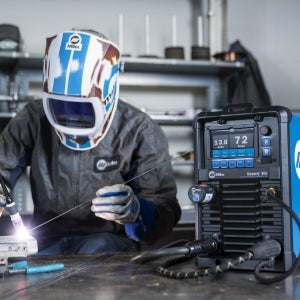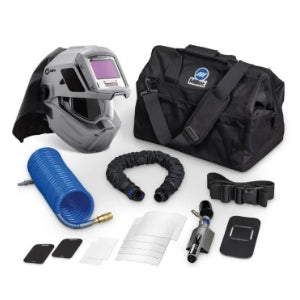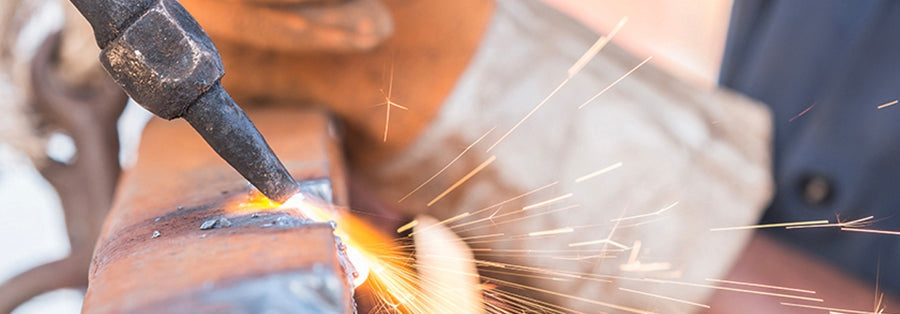Transport yourself back almost 30 years ago. It’s the 80s and early 90s. MTV still plays music videos; gas is a dollar per gallon and auto-darkening helmets are becoming accessible to the average American welder. And boy do they kinda suck.
Back then, auto-darkening helmets were revolutionary but full of problems. The batteries were inconsistent, the sensors were easily blocked, and they weren’t even fully automatic (despite the name “auto-darkening helmets”).
Fast forward to the current day and auto-darkening helmets have come a long way. They’re significantly more reliable and feature better sensors that prevent accidental flashes. They’ve become standard for most of the industry, but there’s one thing that hasn’t changed: You’ve still always had to set the shade level manually… until now.
With the release of their new Helix helmet, Optrel introduced an innovative technology called “ShadeTronic.” For the first time, auto-darkening is fully automatic. While ShadeTronic originally was only offered with their new Helix helmet, it’s now being rolled out to several other Optrel models.
How Helpful Is ShadeTronic, Really?
Welders tend to be skeptical about new products. We’re an industry built on reliability and impact rather than quick gimmicks. So how much will ShadeTronic tech improve your day-to-day situation?
That depends. A lot of welders don’t even bother to change their shade number unless their ability to see while welding gets really bad. Some welders don’t even know they can change their shade number. If you fall into this category, you’re going to see a significant difference. It all comes down to understanding what shade levels mean:
At their basic function, welding helmets essentially work like oversized sunglasses for your entire face. They protect you from UV rays and darken your view, allowing you to see what you’re welding. Just like sunglasses, old, traditional welding helmets used lenses with a fixed darkness level. If the lens was too dark or not dark enough, you had to entirely switch out the lens with a different one. Each lens was given a “shade number” that noted how dark or light it was.
Even though modern auto-darkening helmets shade your view once you strike an arc, they still use the same shade number system. Whichever shade number you set your helmet to is how dark it’ll go when you strike an arc. It doesn’t matter if it’s a low-amperage or high-amperage arc, the helmet will always darken to the level you set it.
With ShadeTronic helmets, that’s no longer the case. These Optrel hoods will adjust their shade level automatically to give you the optimal brightness for your situation. So, if you’re used to leaving your helmet on a #8 shade and never adjusting it, ShadeTronics will completely change how you’re able to see while you work. This video does an excellent job of demonstrating this point:
Which Helmets Include ShadeTronic Tech
Having a fully automatic auto-darkening helmet is pretty freak’n cool. Optrel promises that it’ll help you weld more effectively with interruption-free work and avoid accidents caused by wrong settings. It also makes the overall welding experience a lot more comfortable and convenient, meaning you can focus on your welds instead of struggling to see what you’re even doing.

Here's a list of different ShadeTronic helmets and the shade numbers ranges they'll automatically adjust to.
No other major welding brand offers an equivalent technology. That makes these Optrel helmets incredibly appealing and gives you a leg up in the industry.
Currently, the new Helix helmets include ShadeTronic tech, as well as a really cool flip function. You can read our full review on the Helix here. ShadeTronic tech also comes with the Optrel Crystal 2.0 helmet, the Panoramaxx CLT and the e684 Series.






